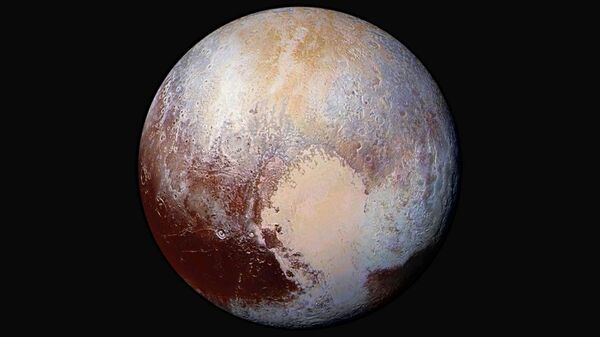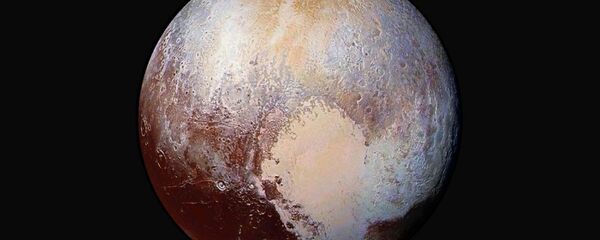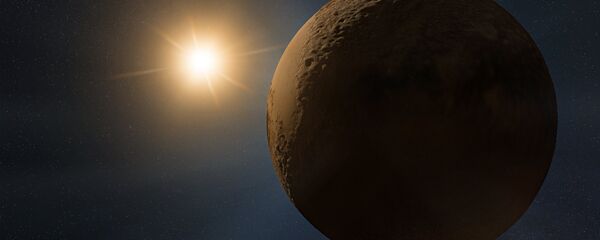Sputnik discussed the discovery with Dr. Matt Telfer, a physical geographer at the University of Plymouth.
Sputnik: How much of a breakthrough is this discovery?
Dr. Matt Telfer: The images first came back with the New Horizons flyby in 2015 and we looked at those images as soon as they came back, which in most cases was a few months after the spacecraft had done the flyby because it takes a long time to get the data back, and we were tempted to think of them as dunes from fairly early days, but it's really hard to explain how it could possibly be the case when the atmosphere there is so thin. How can you have dunes, which require wind, when you have so little atmosphere?
Dr. Matt Telfer: That's right, we got wind speeds we reckon of up to about 10 meters a second possible, but even so the speed is only part of it because the atmosphere is so thin. We're looking at something that's about 0.00001 (one hundred-thousandth) of the Earth's atmosphere.
Sputnik: How big a breakthrough is this discovery?
Dr. Matt Telfer: It's really exiting because it shows us that the atmosphere and the surface of this distant world are interacting really dynamically, not only is the surface affecting the atmosphere, but we now know as well that the atmosphere is affecting the surface. So this is an exciting time to realize that these far-flung worlds in the outer reaches of the solar system are not just icy balls, they're dynamic little worlds.
Sputnik: So were the researchers actually surprised initially to find those dunes on Pluto despite the icy temperatures there, the low atmospheric pressure and all?
Dr. Matt Telfer: I'll answer that in two ways. Before the New Horizon's mission we knew so little about Pluto. The best image we had of Pluto came from the Hubble space telescope and that was about 12 pixels across to cover the whole world, so we really new very, very little, and when those first images came back and we saw mountains, we saw glaciers, we saw icecaps, it was opened up really, and at that stage all bets were off if you like as to what we might find there, and even so, finding dunes was a surprise because of this issue with the thin atmosphere.
Dr. Matt Telfer: Yes, absolutely and that's one of the most remarkable things. We look at a landscape that is in some ways is very exotic, very alien, yet at the same time so startingly familiar. We can look at dune landscapes in China, Pakistan or Iran that look astonishingly similar to these.
Sputnik: So I've been reading some articles on your research and just to break it down for our listeners how dunes are formed: the Sun heats the methane crystals, they rise into the air and weak gusts carry them across, is that how it happens?
Dr. Matt Telfer: Yes, that's right and that's why it's has taken us a good while to work on this because although we realized fairly quickly that the winds are strong enough to carry methane grains once they're all off. We had to think hard to explain how they would be lofted into the air in the first place, and you're right in saying that the methane sublimates, changes from a solid to a gas, but we also think it's important that this icecap that they are sitting on is not pure methane, it's nitrogen as well. So solid nitrogen and solid methane and because when the Sun hits that surface the nitrogen will sublimate first that is what provides pressure to loft the methane grains.
Dr. Matt Telfer: This is really exciting and it's something that we're realizing that these sorts of landforms are cropping up in all sorts of places that we wouldn't necessarily expect them, so we know that there are dunes on Venus, we know that there are dunes on Mars, we've visited both dunes now. We know about dunes on Saturn's moon, Titan, so absolutely, it is quite possible and it will be exciting in a couple of ways. Firstly, New Horizons is visiting a new outer solar system body, a quick belt object on January the 1st of next year, so we're really excited to see what comes back from there and, of course, also we are finding exoplanets; planets around other stars almost daily these days.
Sputnik: Yes, exoplanets are all the rage these days, everybody is talking about them…
Dr. Matt Telfer: Yes, exactly, it's one of those things that's gone in the last really ten years from being something that was almost hypothetical to something that we're finding more and more frequently.
Sputnik: What are you planning to do in the nearest future, have you set your sights on any particular aspects of research?
Dr. Matt Telfer: Yes, were looking at this in a couple of ways. We're really excited to explore this new process of the grains being lofted by sublimation in more detail. That's a new process and that's something we really want to look into to in more detail in terms of dune information, and also, as I said, we're really excited to see what comes out from this flyby on January 1st.




